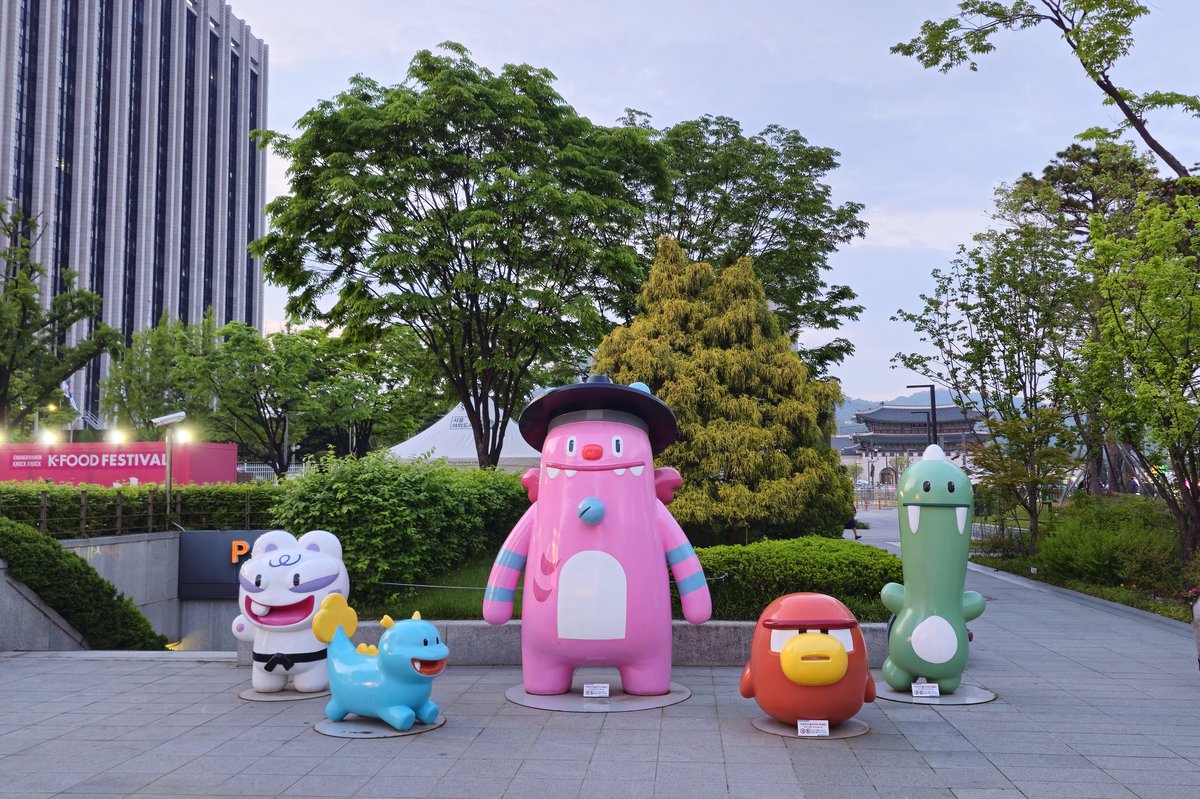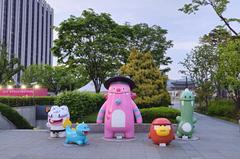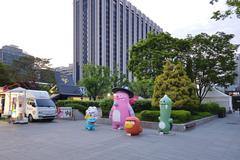
Government Complex Seoul: Visiting Hours, Tickets, and Attractions Guide
Date: 14/06/2025
Introduction
Located in the heart of Seoul, the Government Complex Seoul is a landmark that reflects South Korea’s journey from post-war reconstruction to a thriving modern democracy. Designed during the nation’s rapid modernization, its architecture and location on Sejong-daero symbolize both governmental transparency and the blending of tradition with innovation. For visitors, understanding the complex’s historical evolution, architectural features, visiting protocols, and nearby attractions offers a richer appreciation of its significance (BBC News, KoreaScience, Visit Seoul).
Table of Contents
- Historical Background and Urban Context
- Architectural Design and Features
- Administrative and Cultural Significance
- Visitor Information
- Nearby Attractions
- Frequently Asked Questions (FAQ)
- Practical Tips for Tourists
- Visuals and Interactive Media
- References
Historical Background and Urban Context
Origins and Urban Planning
The Government Complex Seoul (정부서울청사) is a product of South Korea’s post-war modernization. Following the devastation of the Korean War, Seoul’s rapid urbanization in the 1960s drove the need for centralized administrative facilities. The Major Government Building Plan of that era led to the construction of the complex, aiming for administrative efficiency and a symbolic presence in the capital (KoreaScience).
Site Selection
Sejong-daero, chosen for its proximity to historic and governmental landmarks, roots the complex within Seoul’s historical axis. Its location reflects a deliberate blend of tradition and progress, adjacent to Gyeongbokgung Palace and Seoul City Hall (KoreaScience).
Architectural Design and Features
Modernist Vision with Korean Influences
The complex’s design emerged from an international competition, ultimately favoring verticality to reflect modern ambitions. The main structures use concrete, glass, and steel, with geometric forms and open plazas that echo traditional palace layouts while embracing modernist efficiency (OpenKorea).
- Main Government Building: Rectangular massing, rhythmic façade, broad ceremonial staircase, and colonnaded portico.
- Annexes: Complementary design, arranged around landscaped courtyards, integrating international conference facilities and foreign correspondents’ rooms.
- Interior Spaces: Modular office layouts, spacious lobbies, high ceilings, and public art displays.
- Landscaping: Native plant gardens, water features, shaded seating, and pedestrian pathways link the complex to the broader civic landscape.
(Government Buildings Management Office)
Administrative and Cultural Significance
Administrative Hub
The complex houses major ministries such as the Ministry of the Interior and Safety, Ministry of Unification, and the Financial Services Commission (Wikipedia). Its centralization enhances coordination, policy implementation, and public engagement.
Cultural Role
Beyond administration, the complex is a symbol of South Korea’s democratic evolution and public transparency. Facilities like the Open Communication Forum on the first floor facilitate citizen-government dialogue, fostering civic engagement (Government Buildings Management Office).
Visitor Information
Visiting Hours & Admission
- Exterior Grounds: Open Monday–Friday, 9:00 AM to 6:00 PM. Interior access is restricted except for those with official business or pre-arranged tours.
- Open Communication Forum & Public Spaces: Accessible during business hours; forums require prior online registration.
- Admission: No tickets or entrance fees for exterior or public areas.
(Visit Seoul, Government Buildings Management Office)
Accessibility & Facilities
- Location: 110 Sejong-daero, Jongno-gu, Seoul.
- Transportation:
- Subway: Gwanghwamun Station (Line 5, Exit 6); City Hall Station (Lines 1 & 2, Exit 3).
- Bus: Multiple routes to Sejong-daero and Gwanghwamun Square.
- Facilities: Multilingual information desks, accessible restrooms, ramps, elevators, and free public Wi-Fi.
(Seoul City Guide, Visit Seoul Tourist Information Center)
Guided Tours & Special Events
- Guided Tours: Offered on select days and require advance booking. Tours cover the complex’s history, architecture, and governmental role.
- Special Events: National ceremonies, exhibitions, and forums are occasionally open to the public, especially around national holidays (World Cities Culture Forum).
Travel Tips
- Arrive early and allow time for security screening.
- Photography is allowed outside but restricted inside and near security zones.
- Modest dress is recommended, especially during official events.
- Use public transportation for convenience.
Nearby Attractions
- Gwanghwamun Square: Statues of King Sejong and Admiral Yi Sun-sin, gardens, and exhibitions (Korea Travel Post).
- Gyeongbokgung Palace: Historical palace with guided tours and performances (The Soul of Seoul).
- Sejong Center for the Performing Arts: Concerts, theater, and art exhibitions (Korea Trip Advisor).
- Cheonggyecheon Stream: Urban waterway for walks and relaxation (Hey Roseanne).
- Seoul City Hall: Green Wall and eco-friendly architecture.
Frequently Asked Questions (FAQ)
Q1: Can I enter the buildings?
A1: Interior access is generally restricted. Public spaces and exterior grounds are open during business hours.
Q2: Are tickets required?
A2: No, exterior and public spaces are free to access. Guided tours or forums require advance arrangements.
Q3: Is the complex accessible for people with disabilities?
A3: Yes, with barrier-free entrances, ramps, elevators, and accessible restrooms.
Q4: What is the best way to get there?
A4: Subway (Gwanghwamun or City Hall Stations) or bus; walking is easy from central Seoul landmarks.
Q5: What are other nearby attractions?
A5: Gwanghwamun Square, Gyeongbokgung Palace, Sejong Center, and Cheonggyecheon Stream.
Practical Tips for Tourists
- Language: English signage is common; use translation apps for convenience (Hey Roseanne).
- Transportation: T-money card for transit; Climate Card Tourist Pass available for unlimited rides (In My Korea).
- Safety: Respect security measures; avoid photographing sensitive areas.
- Tourist Assistance: 24/7 Korea Travel Hotline (1330); nearby information centers.
Visuals and Interactive Media
- Virtual tours and interactive maps
 Alt text: Government Complex Seoul building exterior showcasing its modern architecture in Jongno District.
Alt text: Government Complex Seoul building exterior showcasing its modern architecture in Jongno District.
References
- BBC News
- KoreaScience
- OpenKorea
- Namu Wiki
- Visit Seoul
- Emerald Insight
- World Cities Culture Forum
- Government Buildings Management Office
- Wikipedia
- Seoul City Guide
- Korea Travel Post
- The Soul of Seoul
- Korea Trip Advisor
- Hey Roseanne
- In My Korea
Plan Your Visit
Download the Audiala app for curated travel guides, real-time updates, and personalized recommendations for Government Complex Seoul and other top attractions. Check the Visit Seoul and Seoul City Guide for the latest visitor information. Follow us on social media and share your Government Complex Seoul experiences!














































































































































































































